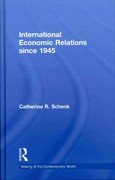Question
Question 1 b) When food expenditure (Y) was regressed on gender, the following equation was obtained. Y i =3176.833-503.166 D i SE=(233.0446) (3295749) t= (13.6318)
Question 1
b) When food expenditure (Y) was regressed on gender, the following equation was obtained.
Yi=3176.833-503.166 Di
SE=(233.0446) (3295749)
t= (13.6318) P value=0.15 r2=0.189.
Where Di-=1 if female; 0 if male.
i) At =0.05, do you think that gender significantly influences the annual food expenditure for a household?
ii) What are the annual food expenditure for males and females respectively.
c) Besides Di in the above model another independent variable which is the after tax income was incorporated in the model. The following results were obtained using SPSS:
Yi=1506.244-228.9868Di+0.058gXi
S.E =(188.0096)(107.0582) (0.006)
t = (8.0115)(_______) (____)
Value (0.001) (0.0611)(0.000)
R2=0.9312; n=5
i) Compute the missing values above.
ii) Why is r2 in (b) above smaller than R2 in this expanded model?
iii) From your results here, test the research hypothesis that "after tax income significantly improves the annual food expenditure per household? Take=0.0?
iv) At=0.05, do you think the gender and after tax income of a sponsor of household food expenditure significantly influence/determined the annual food expenditure? How do you explain the high R2?
v) State the annual food expenditure for a female Kenyan whose annual income after KRA tax reduction is Ksh 100,000
vi) how would one go about confirming the presence or absence of heteroscedasticity in a multiple linear regression model. What are the consequences of heteroscedasticity?
Question 2
Let Yi denote quantity demanded, X2 be the price of the quantity demanded, X3. X4 being the earnings per week and income per week respectively. Based on a sampled set of data, the following estimating regression were obtained.
1. Yi=49.667-2.1576 x2i
S.E=(0.746) (-0.1203)
t=(66.535) (-17.935)
r2=0.9757
2. Yi=145.37-2.7775X2-0.3191X4i
SE=(120.06) (0.822) (0.400)
t=(1.2107) (-3.44) (-0.7971)
R2=0.9778
- Comment on the sign of price coefficient on both equation i.e (1) and (2)
- Use both results in equation (1) and (2) to outline some of the consequences of multicollinearity.
- Explain the meaning of subsidiary (quantity) regression, variance Inflation factor (VIF). How would you use subsidiary regression and VIF to check for multicolinearity?
Step by Step Solution
There are 3 Steps involved in it
Step: 1

Get Instant Access to Expert-Tailored Solutions
See step-by-step solutions with expert insights and AI powered tools for academic success
Step: 2

Step: 3

Ace Your Homework with AI
Get the answers you need in no time with our AI-driven, step-by-step assistance
Get Started


